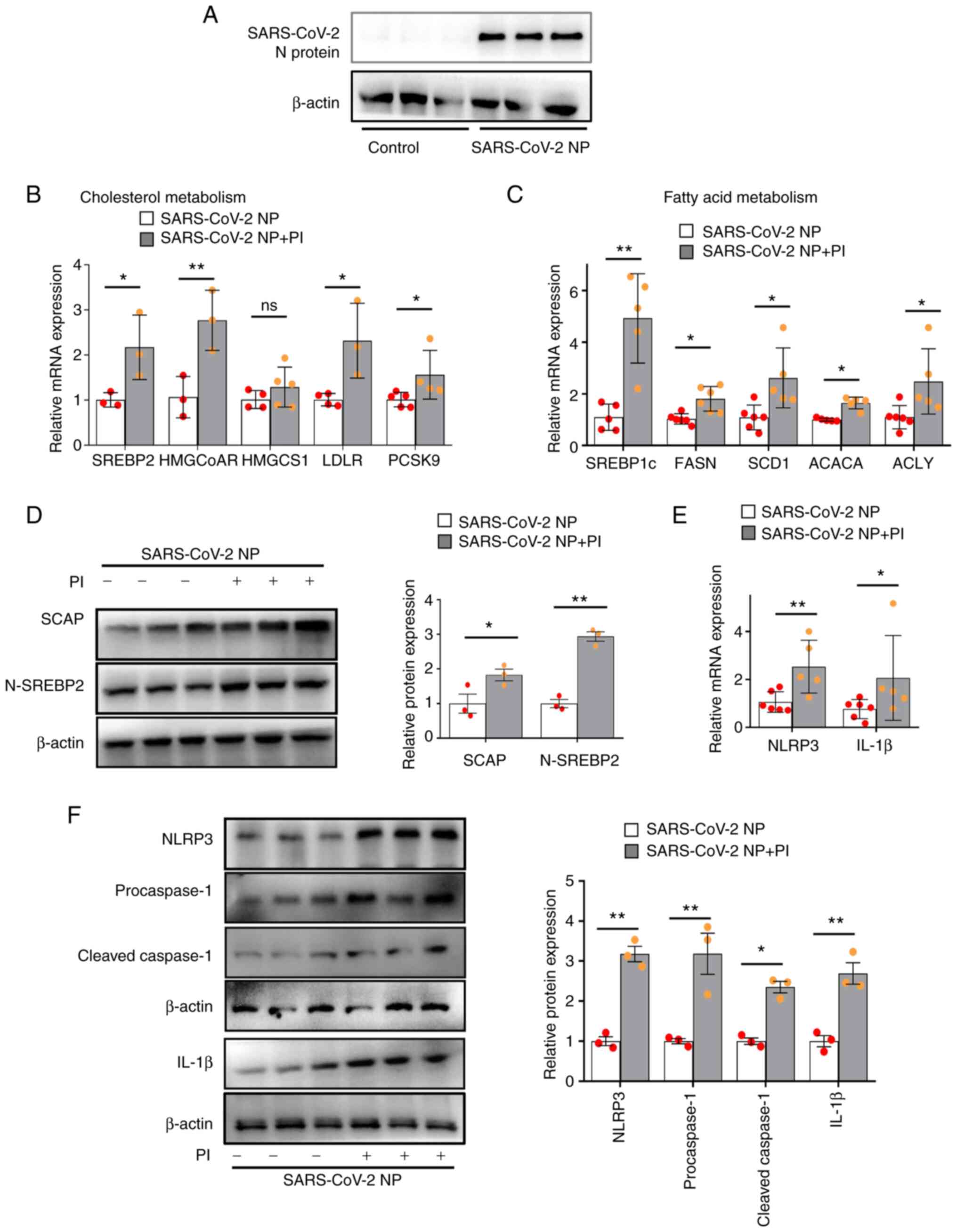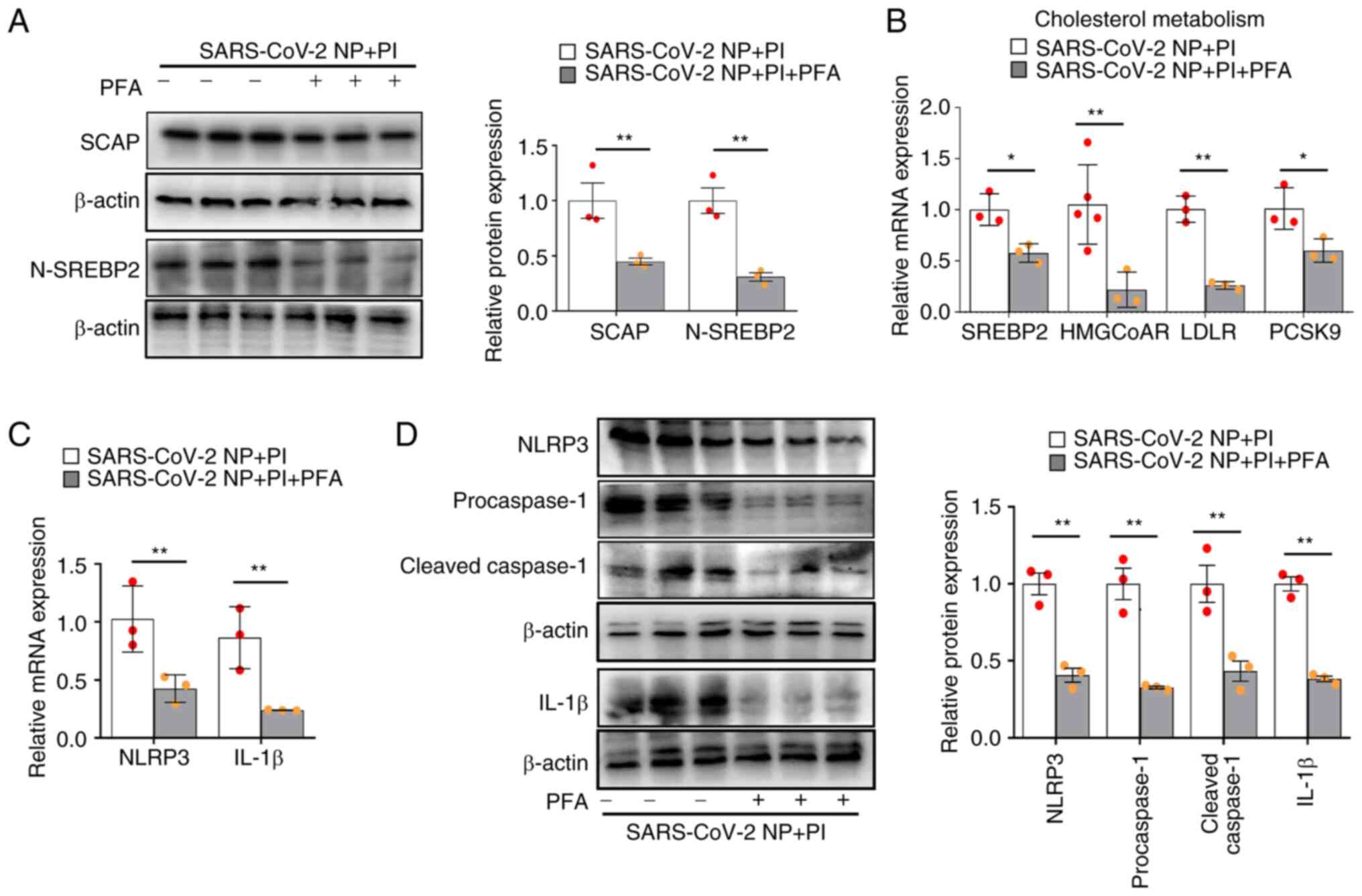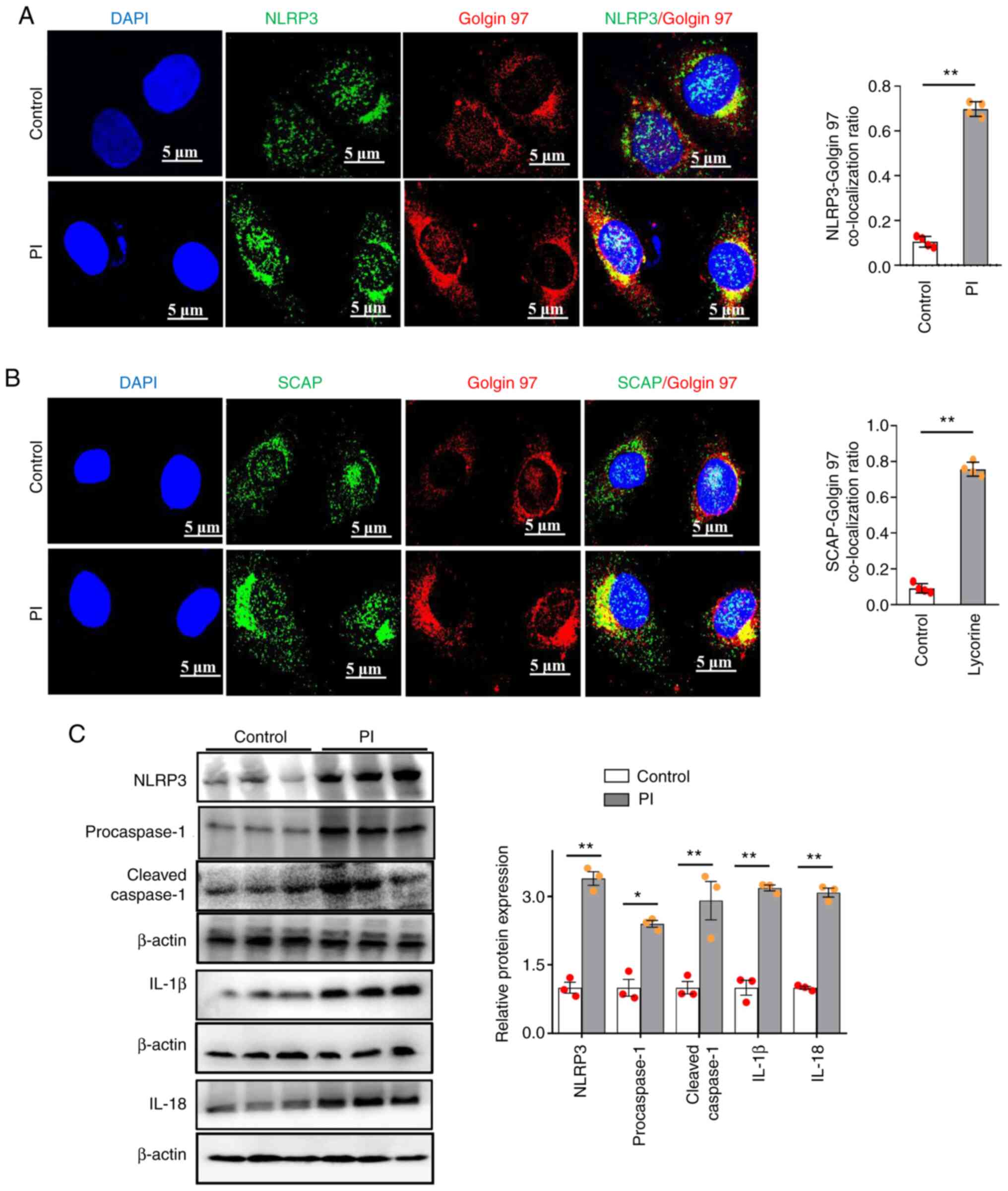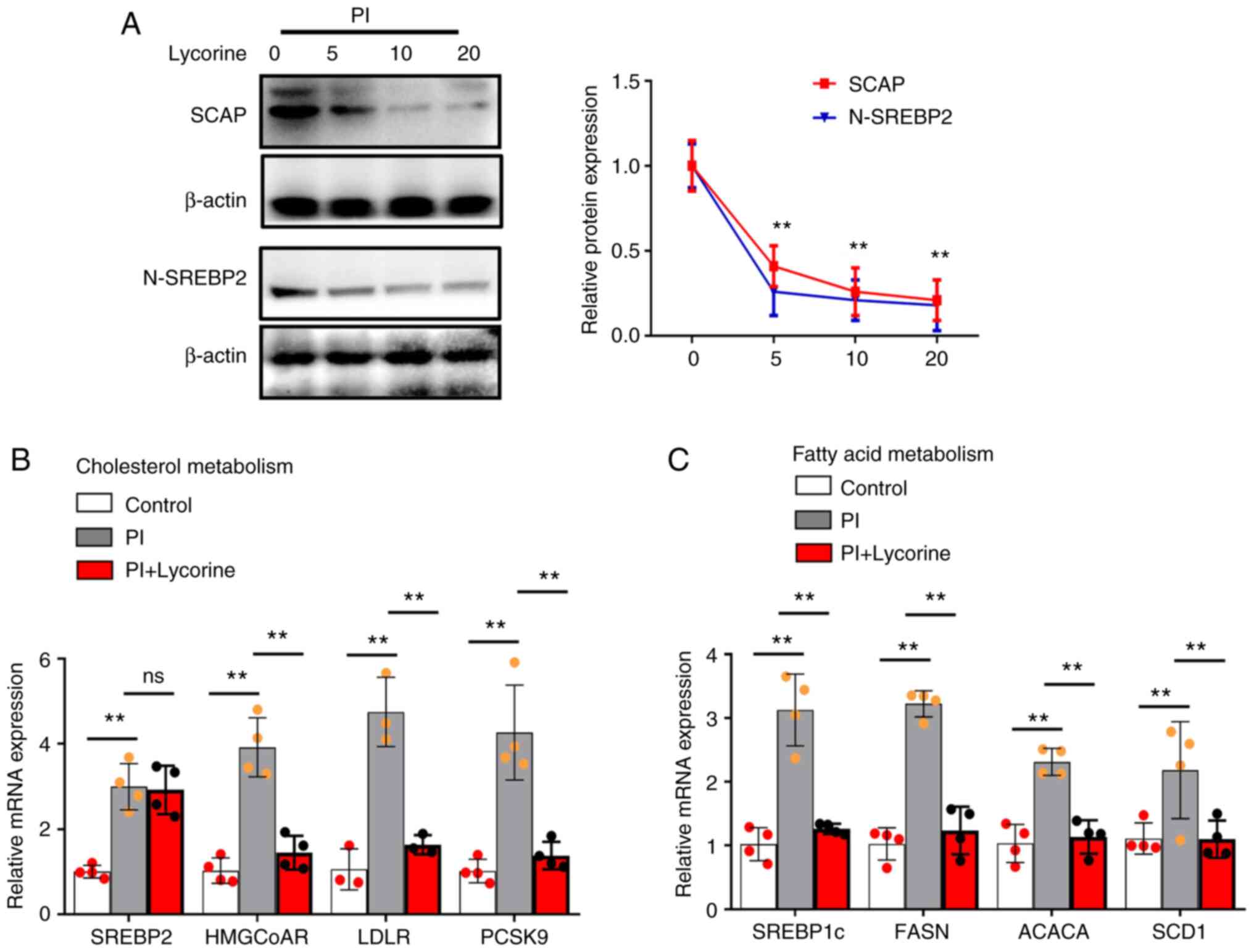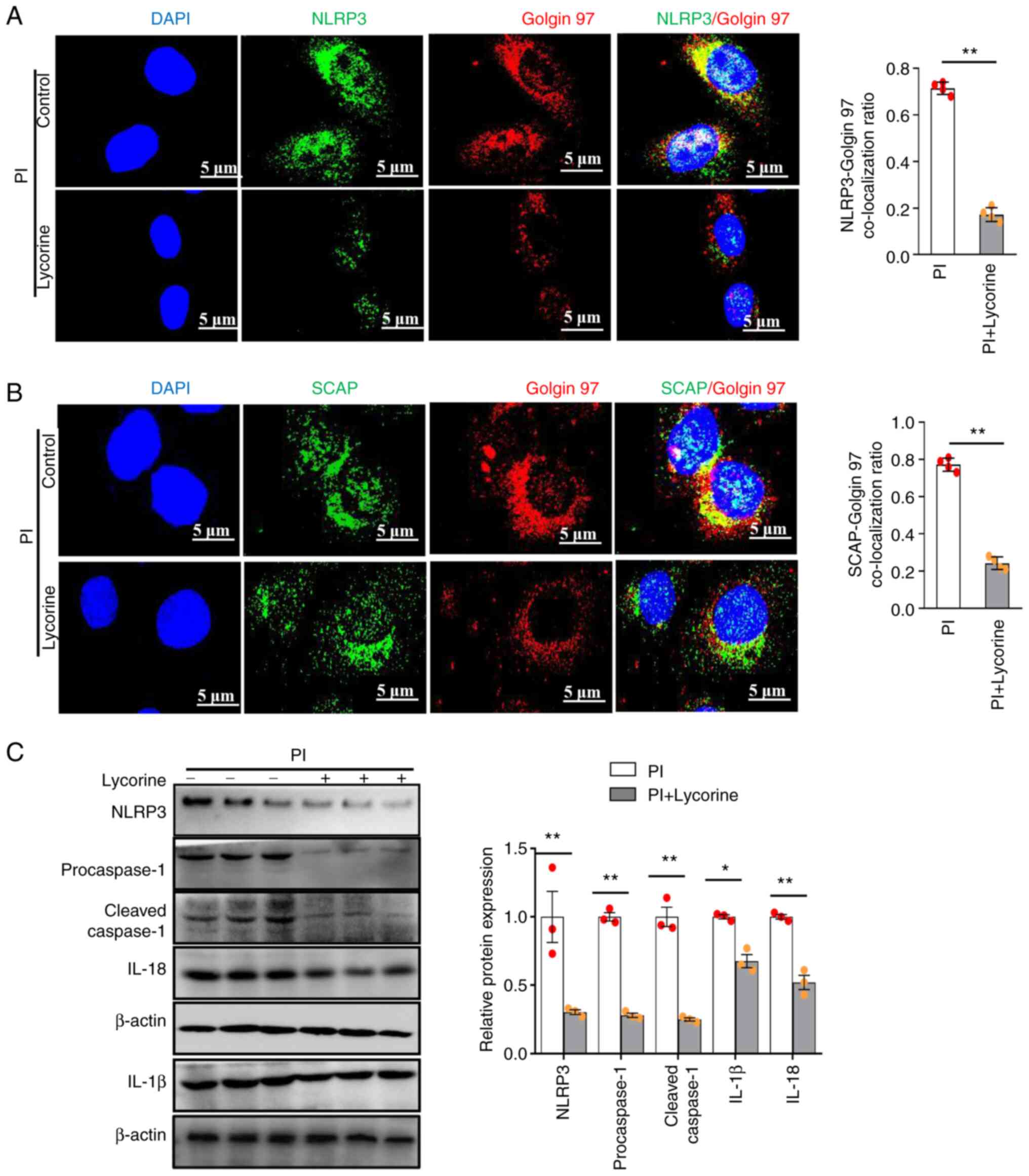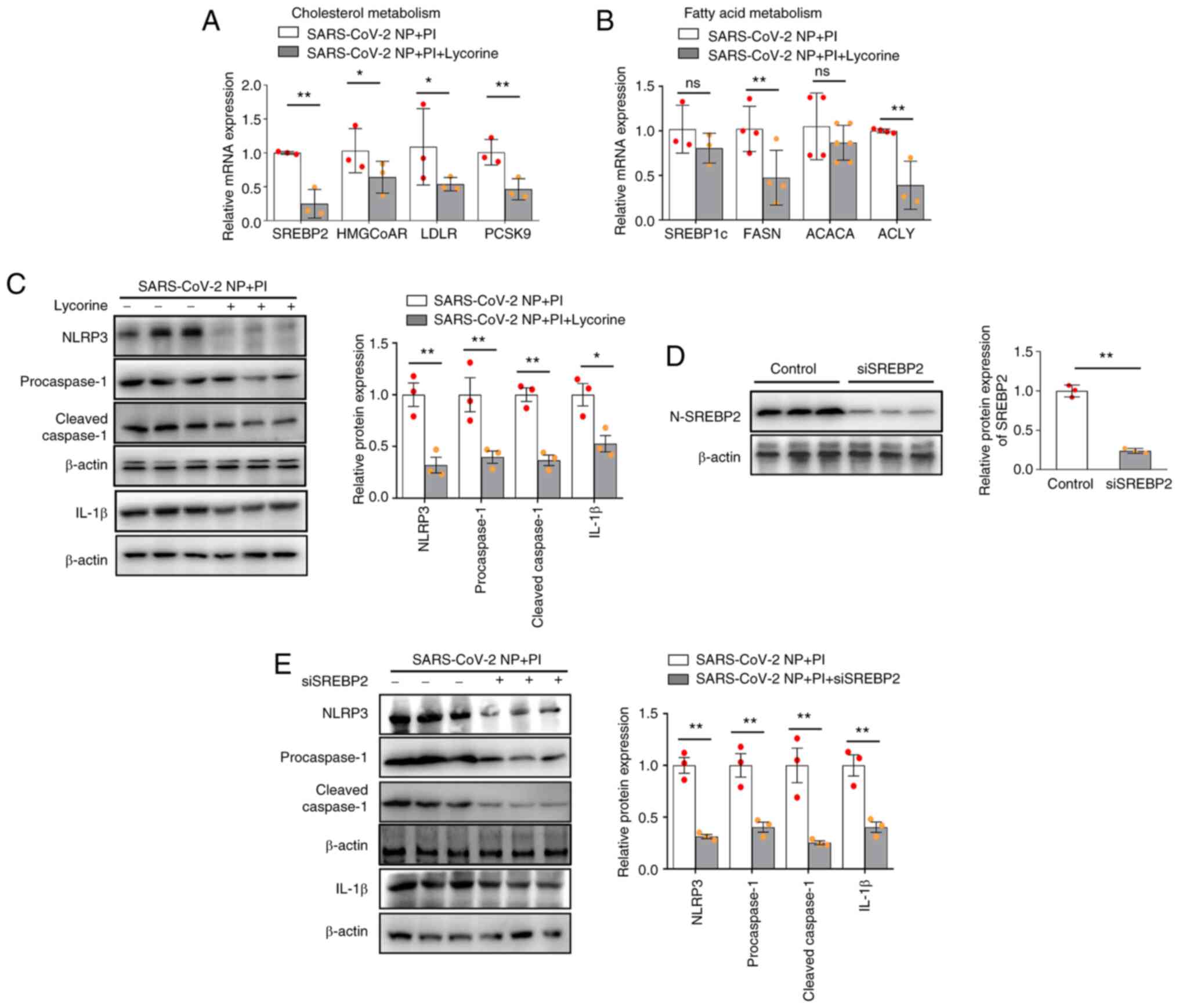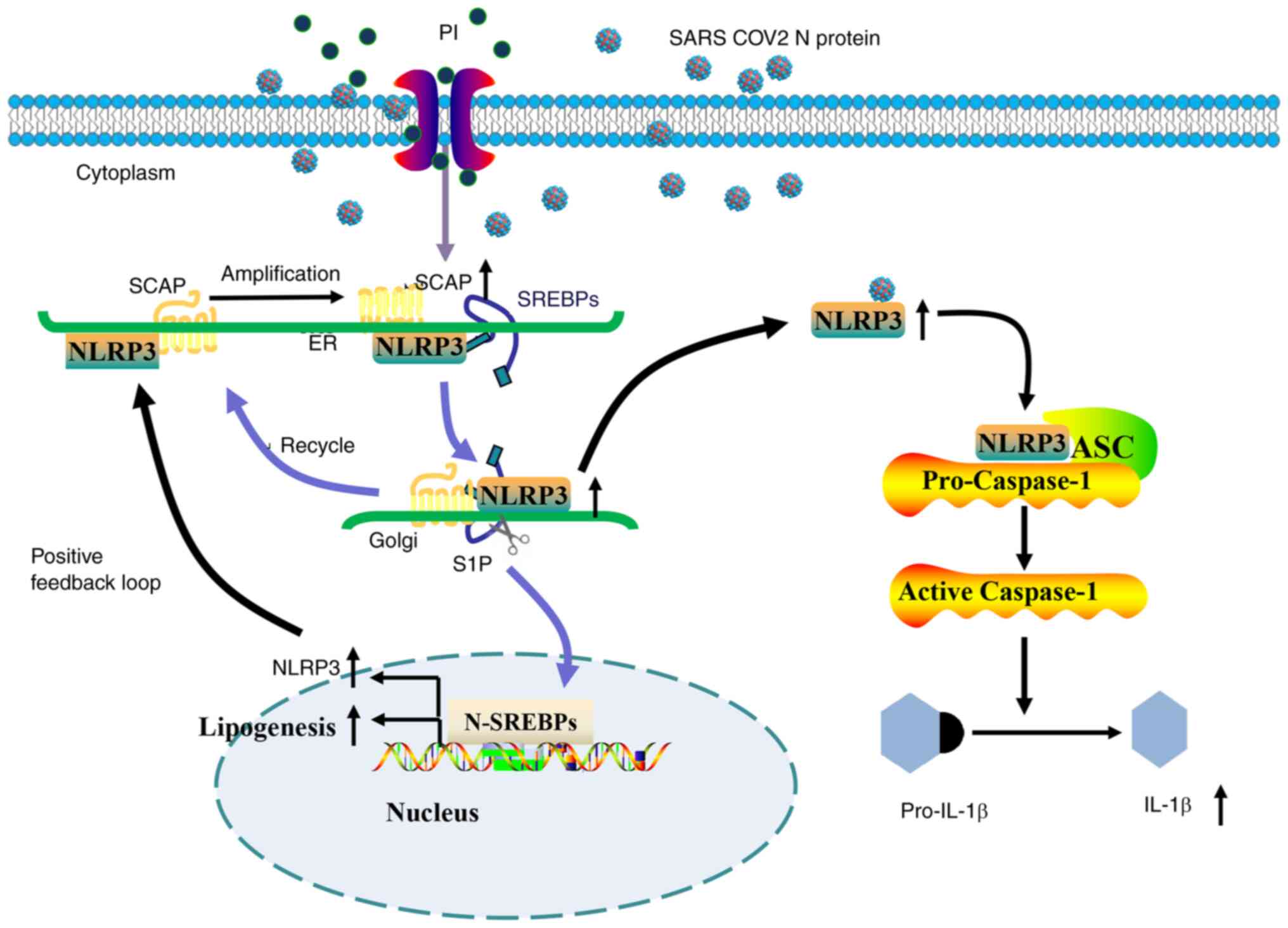|
1
|
Tchidjou HK, Caron F, Ferec A, Braun K,
Hery L, Castelain S and Romeo B: Severe hyperphosphatasemia and
severe acute respiratory syndrome coronavirus 2 infection in
children. Blood Coagul Fibrinolysis. 31:575–577. 2020. View Article : Google Scholar : PubMed/NCBI
|
|
2
|
Martin M, Valls J, Betriu A, Fernandez E
and Valdivielso JM: Association of serum phosphorus with
subclinical atherosclerosis in chronic kidney disease. Sex makes a
difference. Atherosclerosis. 241:264–270. 2015. View Article : Google Scholar : PubMed/NCBI
|
|
3
|
Vervloet MG, Sezer S, Massy ZA, Johansson
L, Cozzolino M and Fouque D; ERA-EDTA Working Group on Chronic
Kidney Disease-Mineral and Bone Disorders and the European Renal
Nutrition Working Group, : The role of phosphate in kidney disease.
Nat Rev Nephrol. 13:27–38. 2017. View Article : Google Scholar : PubMed/NCBI
|
|
4
|
Rubio-Aliaga I and Krapf R: Phosphate
intake, hyperphosphatemia, and kidney function. Pflugers Arch.
474:935–947. 2022. View Article : Google Scholar : PubMed/NCBI
|
|
5
|
Sabaghian T, Honarvar M, Safavi-Naini SAA,
Sadeghi Fadaki AS, Pourhoseingholi MA and Hatamabadi H: Effect of
electrolyte imbalance on mortality and late acute kidney injury in
hospitalized COVID-19 patients. Iran J Kidney Dis. 16:228–237.
2022.PubMed/NCBI
|
|
6
|
Rothan HA and Byrareddy SN: The
epidemiology and pathogenesis of coronavirus disease (COVID-19)
outbreak. J Autoimmun. 109:1024332020. View Article : Google Scholar : PubMed/NCBI
|
|
7
|
Hu X, Chen D, Wu L, He G and Ye W:
Declined serum high density lipoprotein cholesterol is associated
with the severity of COVID-19 infection. Clin Chim Acta.
510:105–110. 2020. View Article : Google Scholar : PubMed/NCBI
|
|
8
|
Wei X, Zeng W, Su J, Wan H, Yu X, Cao X,
Tan W and Wang H: Hypolipidemia is associated with the severity of
COVID-19. J Clin Lipidol. 14:297–304. 2020. View Article : Google Scholar : PubMed/NCBI
|
|
9
|
Lee W, Ahn JH, Park HH, Kim HN, Kim H, Yoo
Y, Shin H, Hong KS, Jang JG, Park CG, et al: COVID-19-activated
SREBP2 disturbs cholesterol biosynthesis and leads to cytokine
storm. Signal Transduct Target Ther. 5:1862020. View Article : Google Scholar : PubMed/NCBI
|
|
10
|
Kim H, Lee HS, Ahn JH, Hong KS, Jang JG,
An J, Mun YH, Yoo SY, Choi YJ, Yun MY, et al: Lung-selective
25-hydroxycholesterol nanotherapeutics as a suppressor of
COVID-19-associated cytokine storm. Nano Today. 38:1011492021.
View Article : Google Scholar : PubMed/NCBI
|
|
11
|
Okute Y, Shoji T, Shimomura N, Tsujimoto
Y, Nagata Y, Uedono H, Nakatani S, Morioka T, Mori K, Fukumoto S,
et al: Serum phosphate as an independent factor associated with
cholesterol metabolism in patients undergoing hemodialysis: A
cross-sectional analysis of the DREAM cohort. Nephrol Dial
Transplant. 38:1002–1008. 2023. View Article : Google Scholar : PubMed/NCBI
|
|
12
|
Ellam T, Wilkie M, Chamberlain J, Crossman
D, Eastell R, Francis S and Chico TJ: Dietary phosphate modulates
atherogenesis and insulin resistance in apolipoprotein E knockout
mice-brief report. Arterioscler Thromb Vasc Biol. 31:1988–1990.
2011. View Article : Google Scholar : PubMed/NCBI
|
|
13
|
Zhou C, He Q, Gan H, Zeng T, Liu Q,
Moorhead JF, Varghese Z, Ouyang N and Ruan XZ: Hyperphosphatemia in
chronic kidney disease exacerbates atherosclerosis via a
mannosidases-mediated complex-type conversion of SCAP N-glycans.
Kidney Int. 99:1342–1353. 2021. View Article : Google Scholar : PubMed/NCBI
|
|
14
|
Li D, Liu M, Li Z, Zheng G, Chen A, Zhao
L, Yang P, Wei L, Chen Y and Ruan XZ: Sterol-resistant SCAP
overexpression in vascular smooth muscle cells accelerates
atherosclerosis by increasing local vascular inflammation through
activation of the NLRP3 inflammasome in mice. Aging Dis.
12:747–763. 2021. View Article : Google Scholar : PubMed/NCBI
|
|
15
|
Pan P, Shen M, Yu Z, Ge W, Chen K, Tian M,
Xiao F, Wang Z, Wang J, Jia Y, et al: SARS-CoV-2 N protein promotes
NLRP3 inflammasome activation to induce hyperinflammation. Nat
Commun. 12:46642021. View Article : Google Scholar : PubMed/NCBI
|
|
16
|
Livak KJ and Schmittgen TD: Analysis of
relative gene expression data using real-time quantitative PCR and
the 2(−Delta Delta C(T)) method. Methods. 25:402–408. 2001.
View Article : Google Scholar : PubMed/NCBI
|
|
17
|
Ganji R, Paulo JA, Xi Y, Kline I, Zhu J,
Clemen CS, Weihl CC, Purdy JG, Gygi SP and Raman M: The p97-UBXD8
complex regulates ER-mitochondria contact sites by altering
membrane lipid saturation and composition. Nat Commun. 14:6382023.
View Article : Google Scholar : PubMed/NCBI
|
|
18
|
Zeng H, Qin H, Liao M, Zheng E, Luo X,
Xiao A, Li Y, Chen L, Wei L, Zhao L, et al: CD36 promotes de novo
lipogenesis in hepatocytes through INSIG2-dependent SREBP1
processing. Mol Metab. 57:1014282022. View Article : Google Scholar : PubMed/NCBI
|
|
19
|
Kong Y, Wu M, Wan X, Sun M, Zhang Y, Wu Z,
Li C, Liang X, Gao L, Ma C and Yue X: Lipophagy-mediated
cholesterol synthesis inhibition is required for the survival of
hepatocellular carcinoma under glutamine deprivation. Redox Biol.
63:1027322023. View Article : Google Scholar : PubMed/NCBI
|
|
20
|
Liu MH, Lin XL and Xiao LL: SARS-CoV-2
nucleocapsid protein promotes TMAO-induced NLRP3 inflammasome
activation by SCAP-SREBP signaling pathway. Tissue Cell.
86:1022762023. View Article : Google Scholar : PubMed/NCBI
|
|
21
|
Jono S, McKee MD, Murry CE, Shioi A,
Nishizawa Y, Mori K, Morii H and Giachelli CM: Phosphate regulation
of vascular smooth muscle cell calcification. Circ Res. 87:E10–E17.
2000. View Article : Google Scholar : PubMed/NCBI
|
|
22
|
Guo C, Chi Z, Jiang D, Xu T, Yu W, Wang Z,
Chen S, Zhang L, Liu Q, Guo X, et al: Cholesterol homeostatic
regulator SCAP-SREBP2 integrates NLRP3 inflammasome activation and
cholesterol biosynthetic signaling in macrophages. Immunity.
49:842–856.e7. 2018. View Article : Google Scholar : PubMed/NCBI
|
|
23
|
Bepouka B, Mayasi N, Mandina M, Longokolo
M, Odio O, Mangala D, Mbula M, Kayembe JM and Situakibanza H: Risk
factors for mortality in COVID-19 patients in sub-Saharan Africa: A
systematic review and meta-analysis. PLoS One. 17:e02760082022.
View Article : Google Scholar : PubMed/NCBI
|
|
24
|
Gibertoni D, Reno C, Rucci P, Fantini MP,
Buscaroli A, Mosconi G, Rigotti A, Giudicissi A, Mambelli E,
Righini M, et al: COVID-19 incidence and mortality in non-dialysis
chronic kidney disease patients. PLoS One. 16:e02545252021.
View Article : Google Scholar : PubMed/NCBI
|
|
25
|
Chung EYM, Palmer SC, Natale P, Krishnan
A, Cooper TE, Saglimbene VM, Ruospo M, Au E, Jayanti S, Liang A, et
al: Incidence and outcomes of COVID-19 in people with CKD: A
systematic review and meta-analysis. Am J Kidney Dis. 78:804–815.
2021. View Article : Google Scholar : PubMed/NCBI
|
|
26
|
Cai R, Zhang J, Zhu Y, Liu L, Liu Y and He
Q: Mortality in chronic kidney disease patients with COVID-19: A
systematic review and meta-analysis. Int Urol Nephrol.
53:1623–1629. 2021. View Article : Google Scholar : PubMed/NCBI
|
|
27
|
Rao A, Ranka S, Ayers C, Hendren N,
Rosenblatt A, Alger HM, Rutan C, Omar W, Khera R, Gupta K, et al:
Association of kidney disease with outcomes in COVID-19: Results
from the american heart association COVID-19 cardiovascular disease
registry. J Am Heart Assoc. 10:e0209102021. View Article : Google Scholar : PubMed/NCBI
|
|
28
|
Lambourg EJ, Gallacher PJ, Hunter RW,
Siddiqui M, Miller-Hodges E, Chalmers JD, Pugh D, Dhaun N and Bell
S: Cardiovascular outcomes in patients with chronic kidney disease
and COVID-19: A multi-regional data-linkage study. Eur Respir J.
60:21031682022. View Article : Google Scholar : PubMed/NCBI
|
|
29
|
Harrison SL, Buckley BJR, Rivera-Caravaca
JM, Zhang J and Lip GYH: Cardiovascular risk factors,
cardiovascular disease, and COVID-19: An umbrella review of
systematic reviews. Eur Heart J Qual Care Clin Outcomes. 7:330–339.
2021.PubMed/NCBI
|
|
30
|
Shi S, Qin M, Shen B, Cai Y, Liu T, Yang
F, Gong W, Liu X, Liang J, Zhao Q, et al: Association of cardiac
injury with mortality in hospitalized patients with COVID-19 in
Wuhan, China. JAMA Cardiol. 5:802–810. 2020. View Article : Google Scholar : PubMed/NCBI
|
|
31
|
Linschoten M, Peters S, van Smeden M,
Jewbali LS, Schaap J, Siebelink HM, Smits PC, Tieleman RG, van der
Harst P, van Gilst WH, et al: Cardiac complications in patients
hospitalised with COVID-19. Eur Heart J Acute Cardiovasc Care.
9:817–823. 2020. View Article : Google Scholar : PubMed/NCBI
|
|
32
|
Podestà MA, Valli F, Galassi A, Cassia MA,
Ciceri P, Barbieri L, Carugo S and Cozzolino M: COVID-19 in chronic
kidney disease: The impact of old and novel cardiovascular risk
factors. Blood Purif. 50:740–749. 2021. View Article : Google Scholar : PubMed/NCBI
|
|
33
|
Malinowska J, Malecka-Gieldowska M,
Bankowska D, Borecka K and Ciepiela O: Hypermagnesemia and
hyperphosphatemia are highly prevalent in patients with COVID-19
and increase the risk of death. Int J Infect Dis. 122:543–549.
2022. View Article : Google Scholar : PubMed/NCBI
|
|
34
|
Dhingra R, Sullivan LM, Fox CS, Wang TJ,
D'Agostino RB Sr, Gaziano JM and Vasan RS: Relations of serum
phosphorus and calcium levels to the incidence of cardiovascular
disease in the community. Arch Intern Med. 167:879–885. 2007.
View Article : Google Scholar : PubMed/NCBI
|
|
35
|
Phan O, Ivanovski O, Nguyen-Khoa T, Mothu
N, Angulo J, Westenfeld R, Ketteler M, Meert N, Maizel J, Nikolov
IG, et al: Sevelamer prevents uremia-enhanced atherosclerosis
progression in apolipoprotein E-deficient mice. Circulation.
112:2875–2882. 2005. View Article : Google Scholar : PubMed/NCBI
|
|
36
|
Nikolov IG, Joki N, Nguyen-Khoa T,
Guerrera IC, Maizel J, Benchitrit J, Machado dos Reis L, Edelman A,
Lacour B, Jorgetti V, et al: Lanthanum carbonate, like
sevelamer-HCl, retards the progression of vascular calcification
and atherosclerosis in uremic apolipoprotein E-deficient mice.
Nephrol Dial Transplant. 27:505–513. 2012. View Article : Google Scholar : PubMed/NCBI
|
|
37
|
Tanaka S, Yamamoto H, Nakahashi O, Kagawa
T, Ishiguro M, Masuda M, Kozai M, Ikeda S, Taketani Y and Takeda E:
Dietary phosphate restriction induces hepatic lipid accumulation
through dysregulation of cholesterol metabolism in mice. Nutr Res.
33:586–593. 2013. View Article : Google Scholar : PubMed/NCBI
|
|
38
|
Lee JH, Lee SH, Lee EH, Cho JY, Song DK,
Lee YJ, Kwon TK, Oh BC, Cho KW, Osborne TF, et al: SCAP deficiency
facilitates obesity and insulin resistance through shifting adipose
tissue macrophage polarization. J Adv Res. 45:1–13. 2023.
View Article : Google Scholar : PubMed/NCBI
|
|
39
|
Abu-Farha M, Thanaraj TA, Qaddoumi MG,
Hashem A, Abubaker J and Al-Mulla F: The role of lipid metabolism
in COVID-19 virus infection and as a drug target. Int J Mol Sci.
21:35442020. View Article : Google Scholar : PubMed/NCBI
|
|
40
|
Al Heialy S, Hachim MY, Senok A, Gaudet M,
Abou Tayoun A, Hamoudi R, Alsheikh-Ali A and Hamid Q: Regulation of
angiotensin-converting enzyme 2 in obesity: Implications for
COVID-19. Front Physiol. 11:5550392020. View Article : Google Scholar : PubMed/NCBI
|
|
41
|
Yuan S, Chu H, Chan JF, Ye ZW, Wen L, Yan
B, Lai PM, Tee KM, Huang J, Chen D, et al: SREBP-dependent
lipidomic reprogramming as a broad-spectrum antiviral target. Nat
Commun. 10:1202019. View Article : Google Scholar : PubMed/NCBI
|
|
42
|
Yuan S, Chan CC, Chik KK, Tsang JO, Liang
R, Cao J, Tang K, Cai JP, Ye ZW, Yin F, et al: Broad-spectrum
host-based antivirals targeting the interferon and lipogenesis
pathways as potential treatment options for the pandemic
coronavirus disease 2019 (COVID-19). Viruses. 12:6282020.
View Article : Google Scholar : PubMed/NCBI
|
|
43
|
Orr AW, Hastings NE, Blackman BR and
Wamhoff BR: Complex regulation and function of the inflammatory
smooth muscle cell phenotype in atherosclerosis. J Vasc Res.
47:168–180. 2010. View Article : Google Scholar : PubMed/NCBI
|
|
44
|
Abbate A, Toldo S, Marchetti C, Kron J,
Van Tassell BW and Dinarello CA: Interleukin-1 and the inflammasome
as therapeutic targets in cardiovascular disease. Circ Res.
126:1260–1280. 2020. View Article : Google Scholar : PubMed/NCBI
|
|
45
|
Burger F, Baptista D, Roth A, da Silva RF,
Montecucco F, Mach F, Brandt KJ and Miteva K: NLRP3 inflammasome
activation controls vascular smooth muscle cells phenotypic switch
in atherosclerosis. Int J Mol Sci. 23:3402021. View Article : Google Scholar : PubMed/NCBI
|
|
46
|
Xiao H, Lu M, Lin TY, Chen Z, Chen G, Wang
WC, Marin T, Shentu TP, Wen L, Gongol B, et al: Sterol regulatory
element binding protein 2 activation of NLRP3 inflammasome in
endothelium mediates hemodynamic-induced atherosclerosis
susceptibility. Circulation. 128:632–642. 2013. View Article : Google Scholar : PubMed/NCBI
|
|
47
|
Coperchini F, Chiovato L, Croce L, Magri F
and Rotondi M: The cytokine storm in COVID-19: An overview of the
involvement of the chemokine/chemokine-receptor system. Cytokine
Growth Factor Rev. 53:25–32. 2020. View Article : Google Scholar : PubMed/NCBI
|
|
48
|
Soares VC, Dias SG, Santos JC,
Azevedo-Quintanilha IG, Moreira IBG, Sacramento CQ,
Fintelman-Rodrigues N, Temerozo JR, da Silva MAN, Barreto-Vieira
DF, et al: Inhibition of the SREBP pathway prevents SARS-CoV-2
replication and inflammasome activation. Life Sci Alliance.
6:e2023020492023. View Article : Google Scholar : PubMed/NCBI
|















